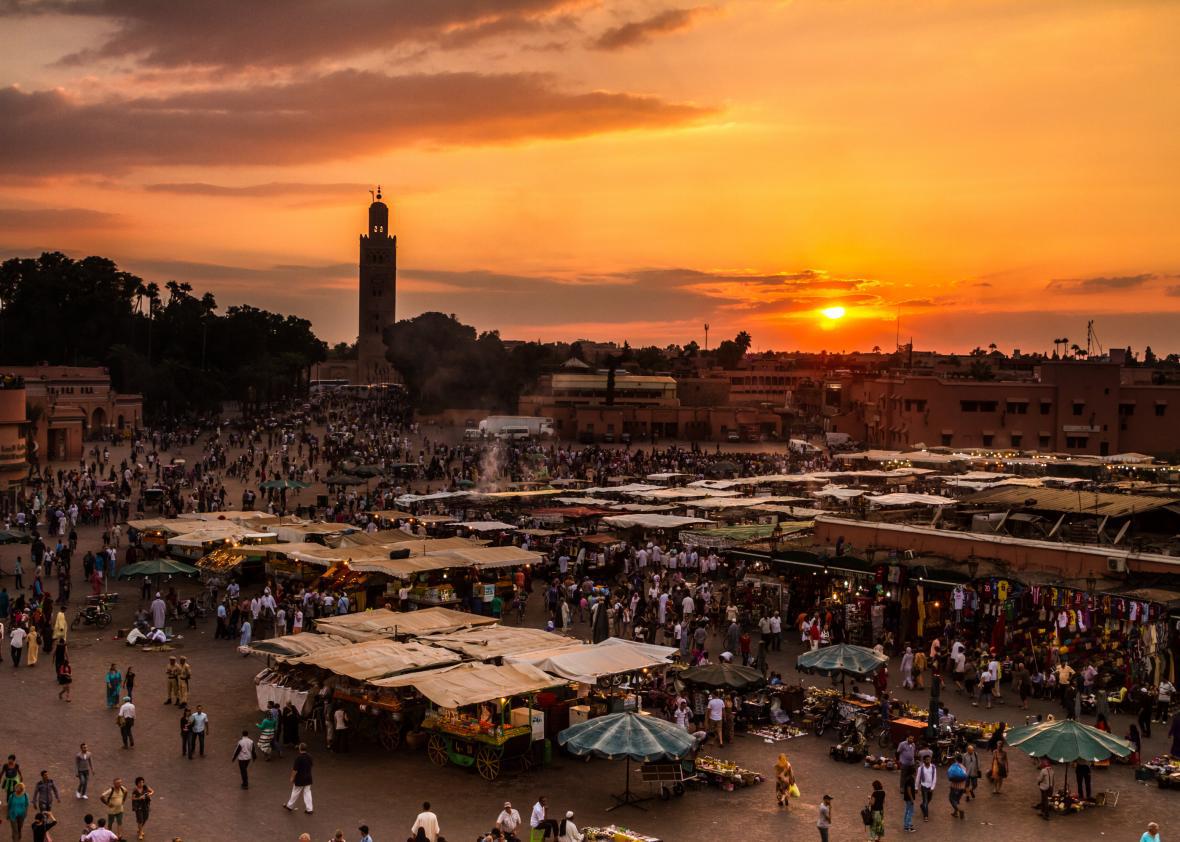For those who heard about the case of Ray Cole—a British tourist arrested last year in Marrakech, Morocco, on suspicion of committing “homosexual acts” and sentenced to four months’ hard time in a Moroccan jail prior to his early release—it is perhaps difficult to imagine that Morocco was something of a gay paradise for white men of standing in the aftermath of World War II.
Gore Vidal describes the queer scene in his memoir, Palimpsest:. “A pack of queens were on the move that summer in Europe,” he wrote:
Some lived by their wits, others on remittances from home. In 1948 they converged on Rome and Paris and Tangier. In the next decade, it would be Athens and Istanbul; later Tokyo, where life was cheap in the seventies and Americans honored. Then Tokyo extruded them and the survivors fled the setting sun for San Francisco.
Tangier—on the northernmost coastal point in Morocco, across the Strait of Gibraltar—was for strategic reasons an international zone, separate from the French-controlled Moroccan protectorate, between 1923 and 1956. This period in its history allowed it to become culturally distinct, and after the war in particular, a focal city for a number of queer American literary types. These poets and novelists sought a different way of life that could not be found in the United States at that time, one of eternal sunshine, mildly exotic cultural interaction, cheap living, and even cheaper boys.
Vidal characterizes himself as the “fugitive” of a group that included Paul Bowles, Tennessee Williams, and Truman Capote, to be joined later by the likes of Allen Ginsberg and William S. Burroughs (who wrote the drug-infused novel Naked Lunch there). Yves Saint Laurent had a home in Tangier for many years (as well as a villa in Marrakech). The darker side of this period in Tangier’s history is apparent in the diaries of the English playwright Joe Orton, which make clear he was none too fussed about the age of the boys he was picking up there.
Queer Tangier died a long time ago. After the city was reunited with Morocco, and the protectorate gained independence in 1956, the expatriate community dwindled away. In the 1960s, during what became known as “the Great Scandal,” foreigners in Tangier were arrested for sexual and drug-related crimes, and many of the city’s seedy brothels were shut down for good. Something of the gay scene moved to Marrakech, but suffice it to say, it is far removed from Tangier’s heyday and very much confined to the margins.
Gay life takes place in the depths of certain hammams (Turkish baths) and the back rows of cinemas, if people happen to know the right spots; needless to say, cruising plays an important role. The most prominent stage after dusk is Jamaa el Fna, the main square and marketplace and gateway to the souk in the heart of the old city. The gardens adjacent to the Koutabia mosque and Avenue Mohammed V between the new and old cities are other reported hot spots. There are no gay bars, but a mix of gay and straight patrons can be found in clubs that cater primarily to Westerners.
Seen in this light, the case of Ray Cole can be said to be another part of the story of the withering away of gay life in Morocco, or at the very least, the end of turning of a blind eye to it. But what is more significant about Cole’s case is that it demonstrates the true reality for gay men in Morocco, namely, that while the laws on homosexuality are enforced inconsistently, there is evidently a double standard employed in their application.
The literature available to potential gay travelers to Morocco—of which there is a great deal since, in spite of laws and social norms there, Morocco remains a prime destination for package holiday-goers from Britain, France, and Germany—is very clear in setting out what is and isn’t acceptable. Gay couples should refrain from public displays of affection and would be advised to seek out hotels and riads (a traditional house with an interior courtyard) known to be gay-friendly. But provided they stick to these guidelines, the police won’t pay them any mind or pick them up on the street.
The situation is altogether different, as Cole managed to discover (or perhaps uncover), if Moroccan nationals are involved. We would never have heard of Cole’s young lover, whose whereabouts were unknown for several days after Cole flew home, had he not been holding hands with an Englishman. The arrest of Moroccans for “homosexual acts” occurs every day and goes unreported. The scenes of Cole’s family greeting him at Britain’s Gatwick Airport contrast starkly with how gay men are treated in Moroccan society: looked down upon, rejected by their families, dismissed with the Maghrebi Arabic slur zamel.
“More than [Cole’s] own case, what happened to him shows how vulnerable gay Moroccans are,”Abdellah Taïa, a Moroccan writer and filmmaker who now lives in exile, wrote in The Guardian, “They are at the mercy of anyone. Your life can be turned upside down at any moment.” To the question of what it is like to be gay in Morocco, then, the answer very much means one thing to a Western visitor and quite another to Moroccan nationals, who are considered by their society and their state to be of lesser value.
Also in Slate:
What’s It Like to Be LGBTQ in … Greece?
What’s It Like to Be Gay in … Poland?
What’s It Like to Be Gay in … Romania?
Correction, July 23, 2015: Due to an editing error, the photo caption originally misidentified Jamaa el Fna as being in Tangier.
